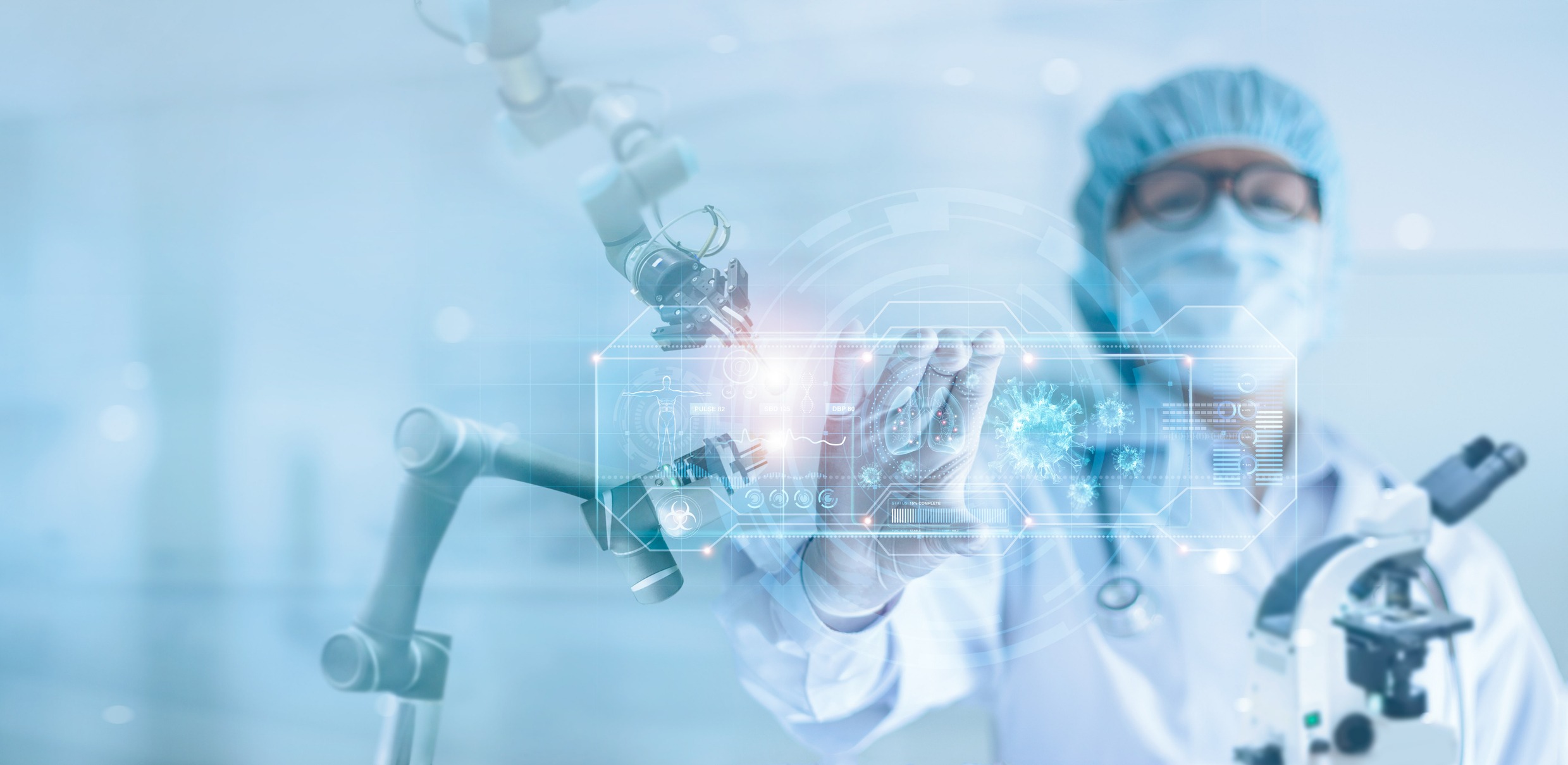When technology works “miracles”

Publicado em 28/02/2023 • Notícias • Português
To what extent can technology contribute to improving people’s life quality and, going further, to curing serious diseases? There is no concrete answer to this question at this time, but what we do know is that the possibilities are many and surprising. To give just one example, we mention here the study of a group of neuroscientists from Switzerland and Germany who implanted a brain chip in a 34-year-old patient, a victim of amyotrophic lateral sclerosis, which paralyzed all the muscles in his body. After many years without being able to speak, the man is communicating again. Not by voice, but the device allows him to transmit messages to the medical staff using only the power of thought.
The chip was designed by the Wyss Center for Bio and Neuroengineering Research in Genebra. The technology, still in its early stages, consists of two chips, each with 64 tiny electrodes that are connected to the motor cortex, the area on the surface of the brain from which conscious commands to move muscles originate. By switching between two patterns of movement intentions, the man can answer “yes” and “no” to questions asked by physicians, and all communication is done based on this binary choice.
Of course, this clinical case mentioned represents a breakthrough out of the curve – at least for now. But technology has already brought great benefits to the medical field, even if, on a day-to-day basis, we are not able to realize it. This is the case, for example, with clinical data management systems, which is already a fundamental process for providing quality care to patients, as well as being an enabler for physicians and staff. Management is also in the background of the healthcare systems transformation, contributing to the telemedicine evolution. And, without a doubt, this also impacts on cost reduction by eliminating waste and rework.
Another aspect that technology is helping to drive is the development of clinical tests, which are becoming increasingly more accurate, ensuring that diagnoses are more precise and obtained in less time. Moving forward in this regard are also the latest technological resources that contribute to surgical procedures being less invasive and performed more quickly. Recent article published on the News Medical Life Sciences Portal points out the latest developments in health technology
Artificial Intelligence (AI): is being used in disease diagnosis as well as to provide customized solutions. For example, in systems processing thousands of CT scans in a mass detection scenario, as in the covid-19 pandemic. This saves radiologists and physicians in patient care, and provides complementary information and thus improves the diagnosis and monitoring accuracy.
Machine Learning: machine learning is being exploited in the pharmaceutical industry to identify new possibilities in drugs, as well as allowing real experiments to be performed through simulations, thus allowing reducing costs.
Robotic systems: with the use of AI and machine learning, this resource is already being used to replace humans in performing unskilled routine tasks. This frees up professionals to treat more patients with less time pressure.
Mobile Health: mobile health information and detection technologies, called mHealth (mobile Health) are gaining prominence. These tools can expand the ability to provide lower cost healthcare with better outcomes. For example, mHealth applications can promote the healthy behaviors adoption to help self-manage chronic diseases and reduce visits to the physicians.
Virtual Reality: increased and virtual reality is being used in new ways to, for example, make it more comfortable for sensitive patients to perform some surgical procedures; or to train medicine students in a more efficient way.
The Internet of Medical Things (IoMT): comprises a network of mobile devices and applications that track and prevent serious events in the chronic diseases course, connecting patients and physicians for better monitoring and management of such conditions. For example, portable electrocardiography (ECG) monitors can allow patients with problematic changes to be identified early enough to abort heart attacks.
Blockchain: the use of blockchain technology has the potential to improve the secure, convenient, and rapid sharing of health information between authorized providers and patients…
Nanotechnology: the development of nanotechnology has given rise to many innovative treatment systems, such as xenobots, the tiny self-replicating organic robots. A wide range of applications is open for nanotechnology in medicine, including nanobots for detecting diseases by passing microscopic blood vessels and drug delivery systems with nanoparticles to ensure more precise and effective treatments.
3D printing: the ability to build body parts such as artificial veins, implants, bionic prostheses, and customized surgical instruments is only part of the future with 3D printing.

 Português
Português
 Espanhol
Espanhol
 Inglês
Inglês






















